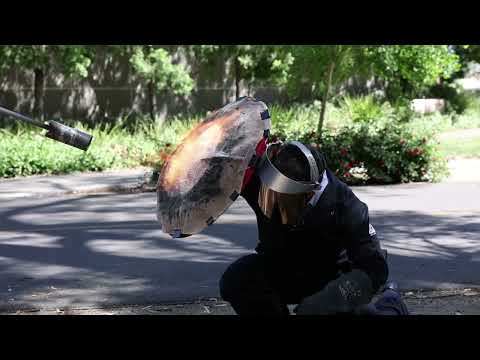
SpaceX conducted its latest Starship test launch at 8:50AM EST on June 6—by far its most successful to date. The fourth of such launches for the company was the first to achieve a successful controlled splashdown of its first-stage Super Heavy booster, as well as the first-ever controlled landing burn for its second-stage “Ship” in the Indian Ocean.
The 15-story-tall Starship is the largest and most powerful rocket ever built, and consists of two stages—a Super Heavy booster and the “Ship” module. The Super Heavy’s 33 methane- and liquid-oxygen fueled Raptor engines collectively generate 16.7 million pounds of thrust. SpaceX says the second-stage Ship is ultimately meant to accommodate as many as 100 crewmembers on voyages to the moon and Mars, if all goes according to plan.
Thursday’s launch was the fourth uncrewed attempt from SpaceX—each one advancing slightly further in the overall goal of successfully relanding the Starship rocket. The company’s first test in April 2023 lasted only four minutes before SpaceX ground controllers triggered a controlled detonation after Starship’s two stages failed to separate. The company nearly doubled their flight time in November 2023 and its most recent attempt in March managed to survive roughly 50 minutes before breaking up during atmospheric reentry.
[Related: SpaceX Starships keep exploding, but it’s all part of Elon Musk’s plan.]
Like the previous test, the aim was for Ship to make a splashdown in the Indian Ocean while the Super Heavy booster drops into the Gulf of Mexico near the SpaceX Starbase. Early reports indicate both goals were achieved for the first time—a major step forward for the Starship program.
Starship’s reliability is key to NASA’s ongoing Artemis lunar program meant to pave the way for establishing a permanent human presence on the moon’s surface by the end of the decade. SpaceX is slated to provide a fully relaunchable Starship for the crewed Artemis 3 mission currently scheduled for September 2026.
Super Heavy has splashed down in the Gulf of Mexico pic.twitter.com/hIY3Gkq57k
— SpaceX (@SpaceX) June 6, 2024
Starship launches have not been without controversy. SpaceX’s April 2023 launch was described as “truly terrifying” by residents near the launchsite in Boca Chica, Texas, as it caused a “mini earthquake” while generating a 25-feet-deep crater. “Virtually everywhere” was covered with fine dust and sand grain in Port Isabel, and bowling ball-sized debris careened into an empty NASA van. Environmental advocates have also repeatedly voiced concerns about the effects of launches on nearby protected wildlife refuge areas. A total of 27 environmental, community, and indigenous organizations issued an open letter before the April 18 launch expressing their frustrations with ongoing tests, noting that Starbase is located near sacred lands for local indigenous communities.
This story is being updated…





